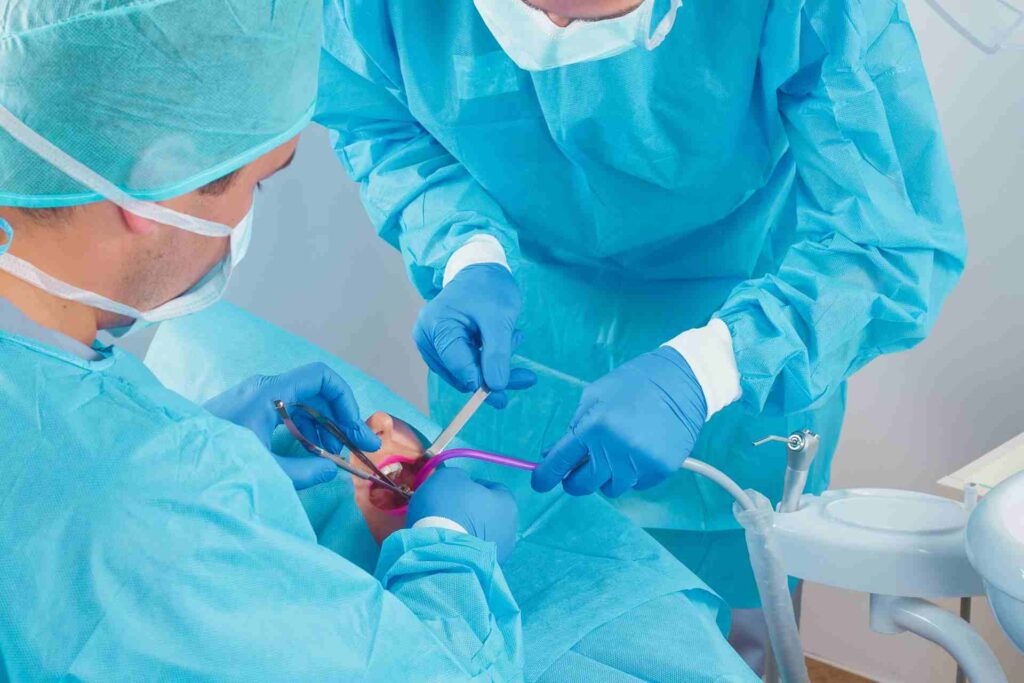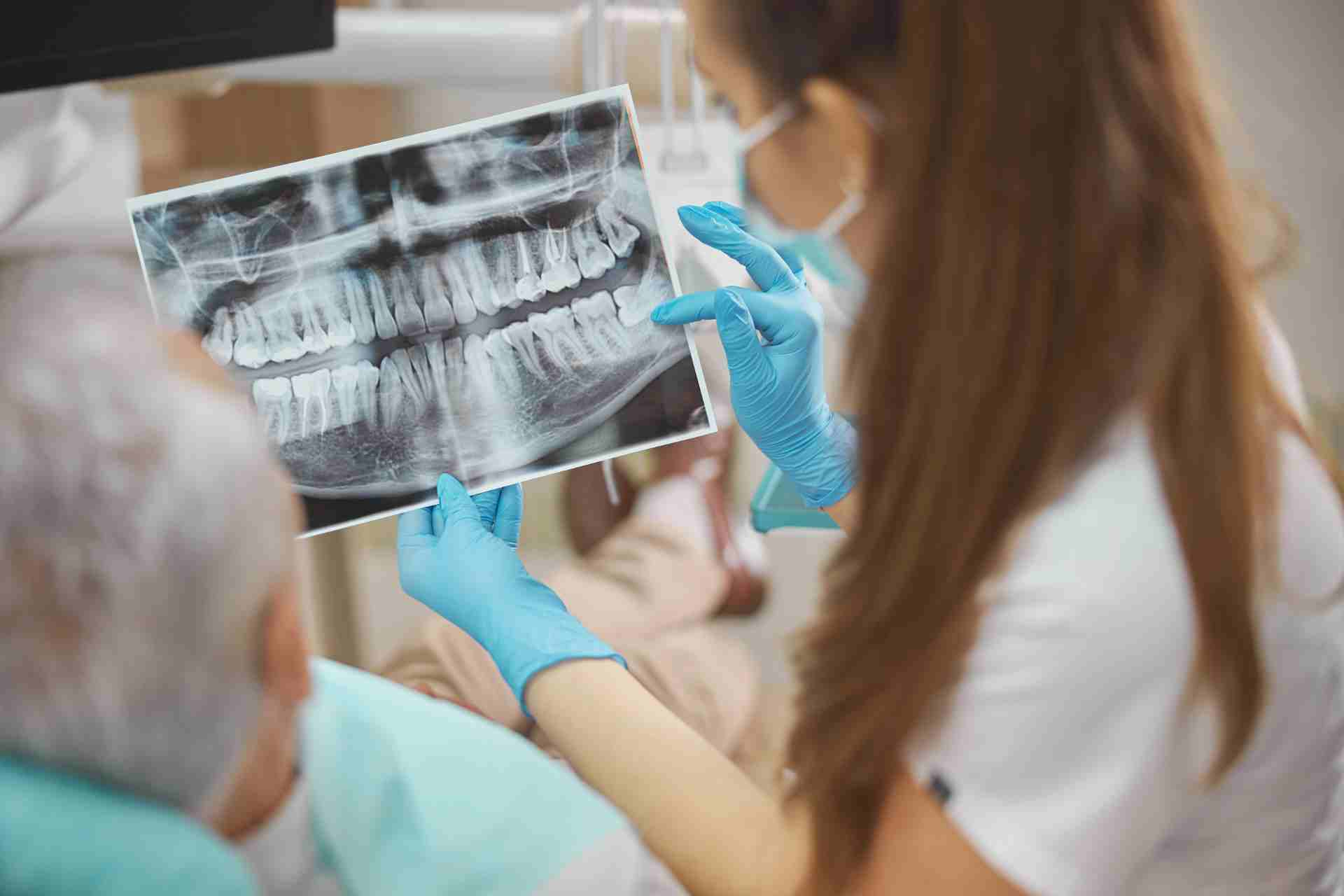Highlights:
- A dental bone graft helps rebuild bone in your jaw for implants or overall oral health.
- It may be needed after tooth loss, gum disease, or extractions.
- Recovery takes a few months but is often painless with proper care.
- There are several types of grafts — and one might be right for you.
Bone grafting might sound intense — but it’s actually a common and highly effective way to preserve or restore your jawbone after tooth loss.
If you’re considering dental implants or experiencing gum-related bone loss, understanding this procedure could be the key to a stronger, healthier smile.
Let’s break it all down.
What Is a Dental Bone Graft?

Let’s break it down: a dental bone graft is a minor surgical procedure where bone is added to your jaw.
That’s it. Nothing scary — just a smart way to strengthen your foundation when your natural bone isn’t quite enough.
It’s most often done before dental implants, especially if your jawbone has thinned or weakened due to tooth loss, gum disease, or even an old injury.
Some people get a graft right after a tooth extraction to preserve the bone, while others need it years later to rebuild what’s been lost.
Whether you’re planning for implants or just want to keep your smile strong, this procedure can make a big difference in your long-term oral health.
Why Might You Need a Bone Graft Before Implants?
Here’s the thing about dental implants — they need solid ground to stand on.
If your jawbone is too thin or has shrunk over time, the implant simply won’t hold. That’s where a bone graft comes in.
It helps rebuild and restore bone in areas that have weakened, giving your future implant the support it needs to last.
This kind of bone loss is more common than you’d think, and it can happen for a few reasons:
- You’ve had a tooth extraction or injury that left a gap.
- You’re dealing with gum disease, which can eat away at bone over time. (See: How Gum Disease is Treated)
- A tooth’s been missing for years — and without stimulation, bone naturally fades.
- There was an infection or a cyst that damaged the area.
And while bone grafting has a high success rate, it’s still important to know what to look for after the procedure.
Bottom line? If your dentist recommends a graft, it’s all about giving your smile a solid foundation — now and in the future.
What Are the Types of Dental Bone Grafts?
Not all bone grafts are the same — and that’s a good thing.
Depending on your needs, your dentist or oral surgeon will choose the type of graft that offers the best results for your situation.
Here’s a quick breakdown of the most common options:
Autograft: This uses bone from your own body — often taken from your jaw, hip, or another area. It’s highly compatible but may require a second surgical site.
Allograft: Donor bone, usually from a tissue bank. It’s safe, widely used, and doesn’t require additional surgery to collect the graft.
Xenograft: Bone material from an animal source, typically bovine (cow). It’s treated and sterilized, and it provides a strong scaffold for new bone growth.
Alloplast: A synthetic bone substitute. These materials are biocompatible and designed to encourage natural bone regeneration over time.
In some cases, your provider might also use platelet-rich plasma (PRP) or a resorbable membrane to speed up healing and protect the graft site.
Each option has its pros and considerations — but the goal is always the same: helping your jaw heal stronger and better.
What Happens During the Procedure?
A dental bone graft sounds more intense than it feels — in most cases, it’s a quick, in-office procedure done under local anesthesia.

Here’s what typically happens:
- Your dentist will numb the area completely so you stay comfortable
- They’ll carefully place the bone graft material into the area
- A membrane or tiny stitches may secure the graft to hold everything in place
- You’ll get detailed aftercare instructions so you can heal safely at home
This type of procedure is often done right after a tooth has been pulled to preserve bone volume — which makes implant placement much easier down the line.
Note: If you’re recovering from an extraction, it’s important to avoid bubbly (carbonated) beverages.
Dental Bone Graft Recovery Timeline and Tips
The good news? Most people feel back to normal within just a few days.
That said, the graft itself takes longer to fully heal — usually about 3 to 6 months before your dentist can safely place an implant.
Here’s what you can expect during recovery:
- Mild swelling or tenderness near the graft site, especially in the first 48 hours.
- A soft food diet is best at first — think smoothies, soups, and mashed veggies.
- Avoid smoking and carbonated drinks, which can interfere with healing and increase complications.
- Be sure to follow all aftercare instructions from your dentist — these small steps can make a big difference in how smoothly your body heals.
Feeling a little discomfort is totally normal. If you’re wondering how to ease it, here are some ways to relieve pain after dental implants that may help during graft recovery, too.
Is a Dental Bone Graft Painful?
It’s a fair question — and the answer might surprise you.
Most people experience only mild discomfort, similar to what you’d feel after a routine dental procedure or extraction.
The area will be completely numbed during the procedure, so you won’t feel pain while it’s happening. And afterward? Your dentist will give you clear instructions on how to manage any soreness with over-the-counter pain relief, rest, and proper care.
Some swelling or tenderness is normal in the first few days, but it’s usually very manageable — and most patients are back to their normal routines quickly.
You’ll also be told exactly what symptoms to watch for, like unusual pain or signs of infection, so you can catch any concerns early and stay on track for a smooth recovery.
How Much Does a Dental Bone Graft Cost?
Like most dental procedures, the cost of a bone graft can vary — and it depends on a few key factors.

Some of the biggest price influencers include:
- The type of graft material used — natural bone, donor tissue, or synthetic
- Whether the graft is done on its own or alongside another procedure like an extraction or implant
- Your dentist’s individual fees and whether you’re being treated by a specialist
- Your dental insurance — some plans may cover part of the cost, especially if the graft is medically necessary
On average, you can expect to pay anywhere from a few hundred to over a thousand dollars for a dental bone graft, depending on the complexity.
Your best bet? Schedule a consultation to get a personalized estimate — and don’t hesitate to ask about payment plans or insurance options.
Key Takeaways
- A dental bone graft strengthens the jaw and supports implants or healing after extractions.
- It’s a common procedure with minimal discomfort and high success rates.
- Recovery is key — following your dentist’s instructions makes all the difference.
- Grafts can be made from your own bone, donor tissue, or synthetic materials.
A dental bone graft might sound intimidating, but it’s one of the most reliable ways to restore your jaw’s health and strength — especially if you’re planning for implants or cosmetic work.
Follow @joycethedentist for more expert tips on dental wellness, beauty, and confident smiles!
FAQs
Do I always need a bone graft before getting a dental implant?
Not always. It depends on how much healthy jawbone you have in place. If there’s been significant bone loss from gum disease, injury, or missing teeth, a graft may be recommended to ensure your implant has the stability it needs.
How long does a dental bone graft take to heal?
The initial recovery takes just a few days, but the full healing and bone integration can take 3 to 6 months. Your dentist will monitor the area to determine when it’s strong enough to support an implant.
Is there an alternative to a bone graft?
Sometimes. In certain cases, dentists can use shorter implants or angled techniques that work with less bone — but not everyone is a candidate. A proper evaluation is the only way to know for sure.
Can I eat normally after a dental bone graft?
Not right away. You’ll need to stick to soft, non-acidic foods while the area heals. Here’s a helpful guide on what to eat after oral surgery to make things easier during those first few days.
What happens if the bone graft fails?
Bone grafts have a high success rate, but in rare cases they may not integrate properly. Symptoms like unusual pain, swelling, or graft material coming loose should be checked right away. Learn more about the signs of a failed dental bone graft.





















